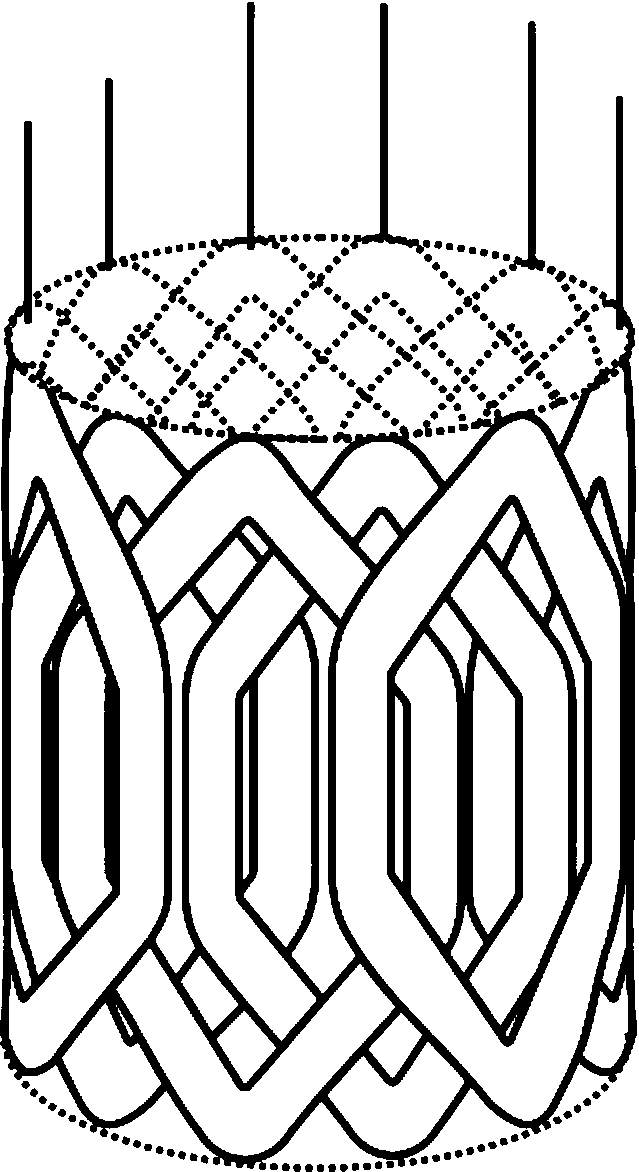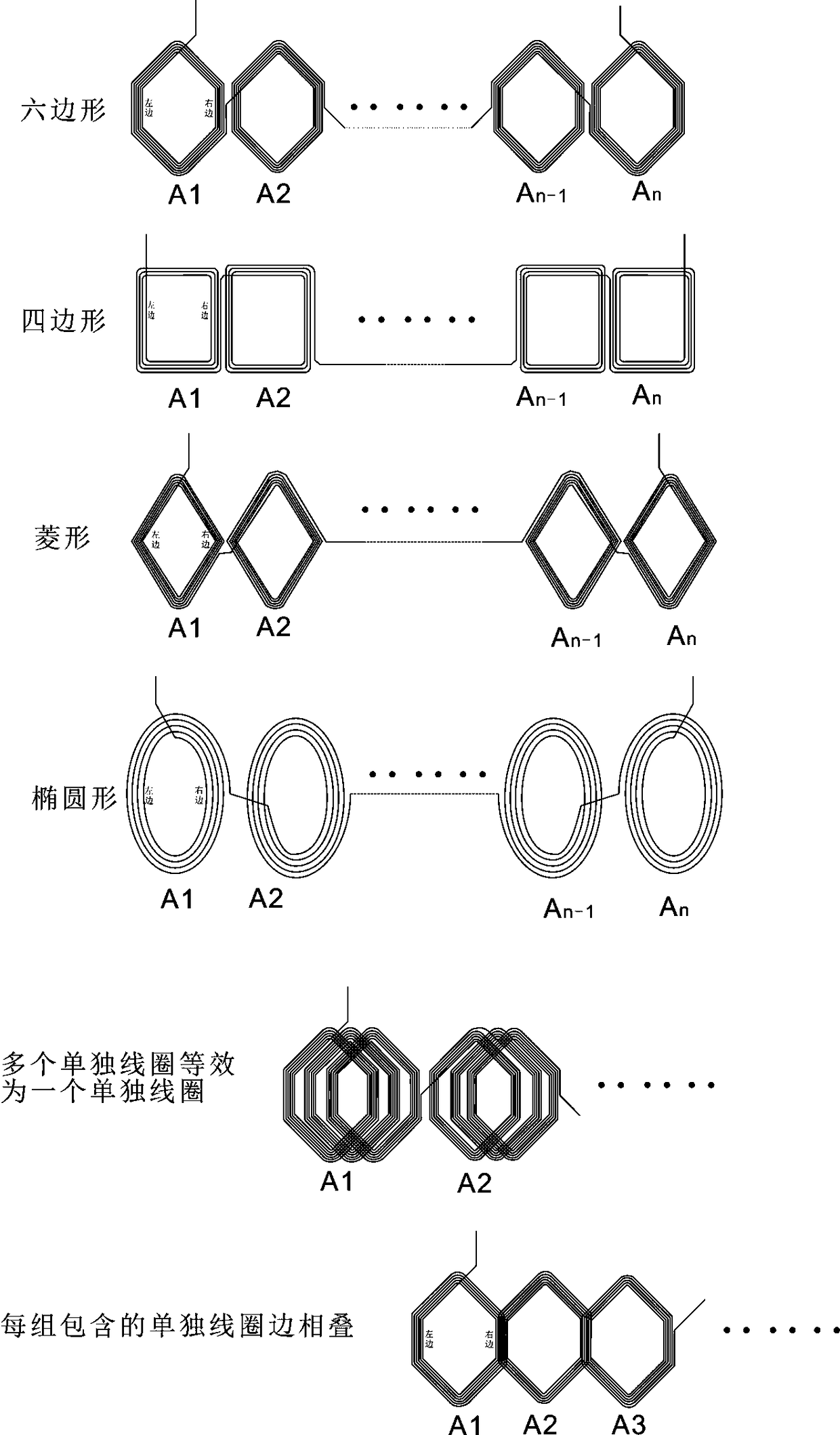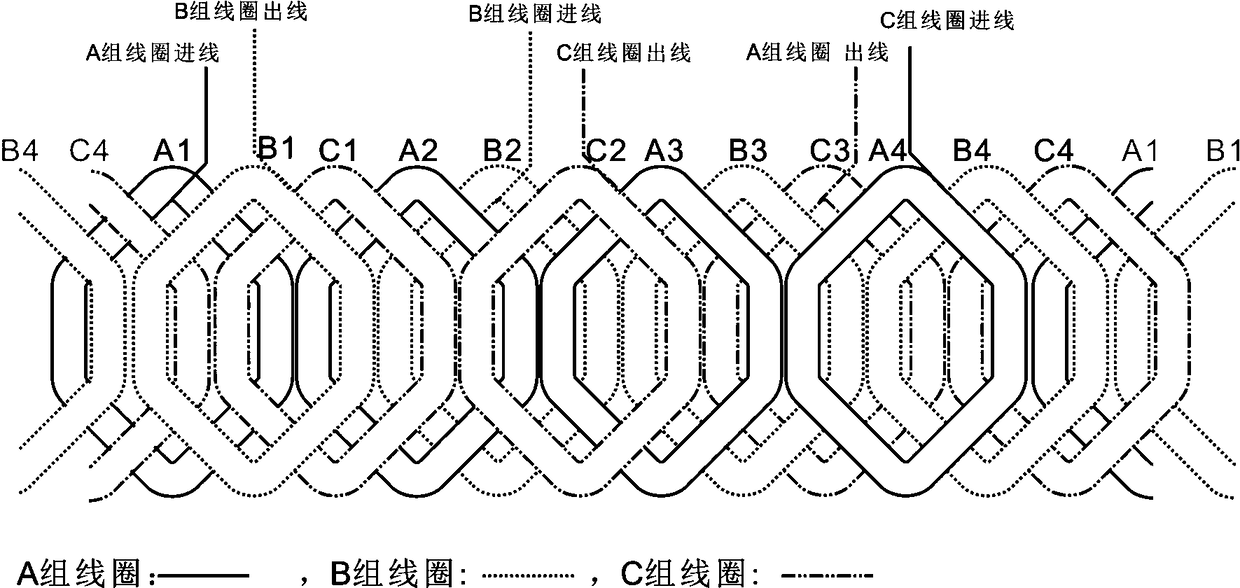Arrangement structure of motor cylindrical coil and winding method thereof
A winding method and coil technology, applied in the field of permanent magnet hollow cup motors, can solve the problems of uneven phase distribution, reduced production efficiency, complicated process operation, etc. wide range of effects
- Summary
- Abstract
- Description
- Claims
- Application Information
AI Technical Summary
Problems solved by technology
Method used
Image
Examples
Embodiment
[0032] Embodiment: a kind of arrangement structure of motor cylindrical coil, such as figure 1 , the cylindrical coil is made by special winding equipment, and becomes the stator winding of the permanent magnet brushless coreless motor or the rotor winding of the permanent magnet brushless coreless motor. The same electromagnetic data is formed in the spatial arrangement of three large winding coils containing multiple identical individual coils, so that the three sets of coils of the motor winding have very good resistance consistency and inductance consistency, and there are only 6 leads at the same time. It is suitable for simplifying the process and increasing the reliability of the coil in the manufacturing process.
[0033] Cylindrical hollow cup coils are divided into three sets of coils A, B, and C. Each set of coils contains multiples of 4 individual coils. Each set of coils contains the same number of individual coils. The data of each individual coil is the same. T...
PUM
 Login to View More
Login to View More Abstract
Description
Claims
Application Information
 Login to View More
Login to View More - R&D
- Intellectual Property
- Life Sciences
- Materials
- Tech Scout
- Unparalleled Data Quality
- Higher Quality Content
- 60% Fewer Hallucinations
Browse by: Latest US Patents, China's latest patents, Technical Efficacy Thesaurus, Application Domain, Technology Topic, Popular Technical Reports.
© 2025 PatSnap. All rights reserved.Legal|Privacy policy|Modern Slavery Act Transparency Statement|Sitemap|About US| Contact US: help@patsnap.com



